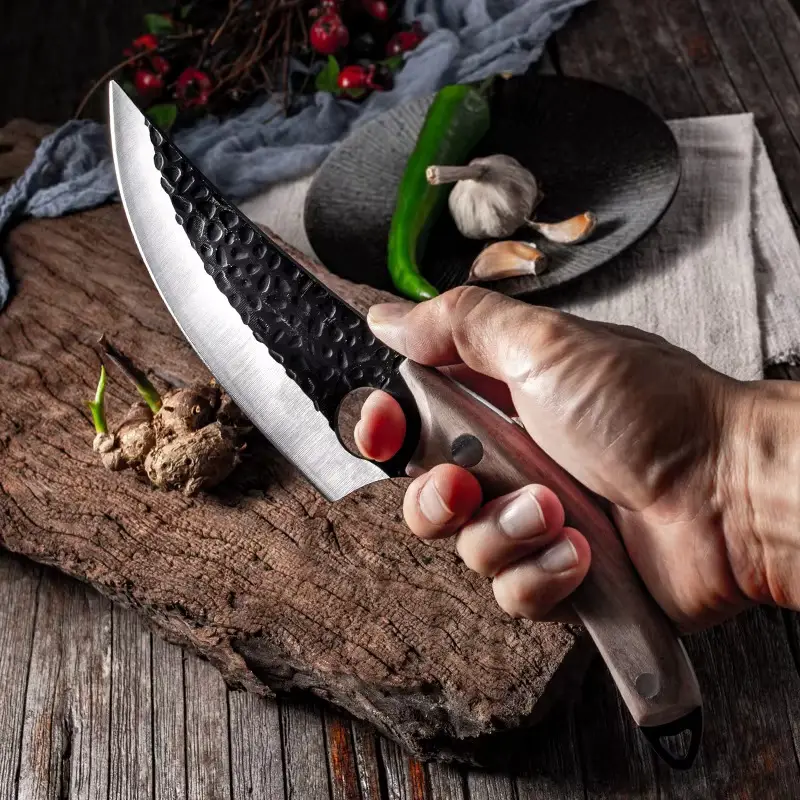My grandmother, Babcia, was the queen of comfort food, and at the heart of her culinary empire were her pierogi. Growing up, the smell of sautéed onions and buttery dough wafting from her kitchen was pure magic. While she made many varieties – sweet cheese, blueberry, even meat-filled – it was her potato and sauerkraut pierogi that held a special place in my heart. There was something about the tangy, earthy sauerkraut perfectly complementing the creamy, mild potatoes, all encased in that tender, slightly chewy dough. Each bite was a burst of flavor and texture, a taste of home and tradition. Trying to recreate Babcia’s pierogi has been a journey of its own, filled with floury mishaps and triumphant moments. This recipe is my closest attempt to capture the essence of her pierogi, a labor of love that I’m thrilled to share with you. Whether you have Polish roots or are simply looking for a delicious and satisfying comfort food, these potato and sauerkraut pierogi are sure to become a new favorite in your kitchen. They are surprisingly versatile, perfect for a cozy weeknight dinner or a special occasion feast. Get ready to roll up your sleeves, embrace the process, and create some culinary magic!
Ingredients for Authentic Potato and Sauerkraut Pierogi
Creating truly delicious potato and sauerkraut pierogi starts with high-quality, thoughtfully chosen ingredients. Each component plays a crucial role in the final flavor and texture of these classic Polish dumplings. Here’s a detailed breakdown of what you’ll need, and why each ingredient is important:
For the Dough:
- 3 Cups All-Purpose Flour, plus more for dusting: Flour is the foundation of the pierogi dough, providing structure and that satisfying chewiness. All-purpose flour is the most commonly used and readily available option, offering a good balance of gluten for elasticity and tenderness. It’s crucial to use good quality all-purpose flour. You’ll need extra flour for dusting your work surface and hands as you roll and shape the pierogi, preventing sticking and ensuring smooth dough handling. For a slightly more tender dough, you can substitute up to 1 cup of all-purpose flour with pastry flour.
- 1 Teaspoon Salt: Salt is not just about flavor; it plays a vital role in gluten development in the dough. It tightens the gluten strands, resulting in a more elastic and workable dough. Salt also enhances the overall flavor of the pierogi, balancing the richness of the filling and the slight sweetness of the dough itself. Use fine sea salt or kosher salt for even distribution in the dough.
- 1 Large Egg: The egg adds richness, color, and structure to the dough. The protein in the egg contributes to the dough’s elasticity, making it easier to roll and shape. The yolk adds fat and tenderness, while the white helps bind the dough together. Use a large, fresh egg for the best results. For a richer dough, you can use an extra egg yolk.
- 1 Cup Warm Water (approximately, may need slightly more or less): Water is essential for hydrating the flour and bringing the dough together. Warm water is often preferred as it helps activate the gluten more effectively and creates a smoother dough. The amount of water needed can vary slightly depending on the humidity and the type of flour used. Add water gradually until the dough comes together into a soft, pliable ball. You want the dough to be moist but not sticky.
For the Potato and Sauerkraut Filling:
- 2 lbs Russet Potatoes (about 4-5 medium potatoes): Russet potatoes are ideal for pierogi filling due to their high starch content and fluffy texture when cooked. They create a creamy, smooth filling that holds its shape well. Other starchy potatoes like Yukon Gold can also be used, but russets are the classic choice for their superior texture in this application. Peel the potatoes thoroughly to ensure a smooth filling.
- 1 lb Sauerkraut, well-drained and rinsed (if too acidic): Sauerkraut is the star of this filling, providing that signature tangy, fermented flavor that is essential to potato and sauerkraut pierogi. Choose good quality sauerkraut, preferably naturally fermented and not overly processed. It’s crucial to drain the sauerkraut well to prevent a watery filling. Taste the sauerkraut before using; if it’s excessively acidic, rinse it briefly under cold water and then drain thoroughly. For a milder sauerkraut flavor, you can rinse it more thoroughly.
- 1 Large Onion, finely diced: Onion adds a savory depth and aromatic complexity to the filling. Yellow or white onions work well. Dicing the onion finely ensures it cooks evenly and blends seamlessly into the filling. Sautéing the onion before adding it to the filling mellows its sharpness and brings out its sweetness, creating a richer flavor base.
- 2 Tablespoons Butter (or vegetable oil for vegan option): Butter (or vegetable oil for a vegan version) is used to sauté the onion and add richness and flavor to the filling. Butter imparts a classic, rich flavor that complements the potatoes and sauerkraut beautifully. For a vegan option, use a good quality vegetable oil like olive oil or canola oil.
- Salt and Black Pepper to taste: Salt and pepper are essential for seasoning the filling and bringing out the flavors of the potatoes and sauerkraut. Season generously to taste, remembering that the flavors will mellow slightly once the pierogi are cooked. Taste the filling and adjust seasoning as needed before filling the pierogi.
For Cooking and Serving (Optional but Recommended):
- Butter or Oil for Sautéing Cooked Pierogi: Sautéing the cooked pierogi in butter or oil is a classic way to finish them, adding a golden-brown crispiness and enhancing their flavor. Butter is traditional and highly recommended for its rich flavor. Vegetable oil or olive oil can be used for a lighter or vegan option.
- Sour Cream, Fried Onions, Bacon Bits, Fresh Dill, etc. (for serving): These are traditional and delicious toppings and accompaniments for pierogi. Sour cream provides a cool, tangy contrast to the warm pierogi. Fried onions add a savory crunch and extra onion flavor. Bacon bits (or vegan bacon bits) add smoky saltiness. Fresh dill provides a bright, herbaceous note. Choose your favorite toppings to customize your pierogi experience.
Having these quality ingredients on hand is the first step towards making truly exceptional potato and sauerkraut pierogi. Freshness and proper preparation of each ingredient will significantly impact the final deliciousness of your homemade pierogi.
Step-by-Step Instructions for Making Potato and Sauerkraut Pierogi
Making pierogi is a labor of love, but following these detailed step-by-step instructions will guide you through the process, from dough preparation to perfectly cooked and delicious dumplings. Let’s break it down into manageable stages:
Part 1: Preparing the Dough
- Combine Dry Ingredients: In a large mixing bowl, whisk together the 3 cups of all-purpose flour and 1 teaspoon of salt. This ensures the salt is evenly distributed throughout the flour, which is important for gluten development and flavor.
- Add Egg and Warm Water: Make a well in the center of the flour mixture. Crack the large egg into the well. Gradually pour in the 1 cup of warm water. Start mixing the ingredients together with a spoon or your hands.
- Knead the Dough: Once the dough starts to come together, turn it out onto a lightly floured surface. Knead the dough for 5-7 minutes, or until it becomes smooth, elastic, and no longer sticky. Initially, the dough might seem a bit shaggy, but as you knead, the gluten will develop, and it will become smoother. If the dough is too sticky, add a little more flour, one tablespoon at a time. If it’s too dry, add a teaspoon of water at a time. The dough should be soft and pliable, but not sticky.
- Rest the Dough: Form the dough into a ball, place it back in the bowl, and cover it with a clean kitchen towel or plastic wrap. Let the dough rest for at least 30 minutes at room temperature. Resting allows the gluten to relax, making the dough easier to roll out and preventing it from shrinking back when you shape the pierogi. This resting period is crucial for a tender and workable dough.
Part 2: Preparing the Potato and Sauerkraut Filling
- Cook the Potatoes: Peel the 2 lbs of russet potatoes and cut them into uniform chunks. Place the potato chunks in a pot and cover them with cold water. Add a pinch of salt to the water. Bring to a boil and cook until the potatoes are tender and easily pierced with a fork, about 15-20 minutes.
- Drain and Mash the Potatoes: Once the potatoes are cooked, drain them thoroughly in a colander. Return the drained potatoes to the pot. Mash the potatoes until smooth, using a potato masher or a ricer for an extra smooth texture. Ensure there are no lumps.
- Sauté the Onion: While the potatoes are cooking, finely dice the 1 large onion. Melt 2 tablespoons of butter (or vegetable oil) in a skillet over medium heat. Add the diced onion and sauté until softened and lightly golden, about 5-7 minutes. Sautéing the onion mellows its flavor and adds depth to the filling.
- Prepare the Sauerkraut: If your sauerkraut is very acidic, rinse it briefly under cold water and then drain it very well. Squeeze out as much excess liquid as possible. If the sauerkraut strands are very long, you can roughly chop them for a more manageable filling texture.
- Combine Filling Ingredients: Add the well-drained sauerkraut and the sautéed onions to the mashed potatoes. Mix everything together thoroughly until well combined.
- Season the Filling: Season the potato and sauerkraut filling generously with salt and black pepper to taste. Remember to taste and adjust the seasoning as needed. The filling should be flavorful enough to stand out in the pierogi.
Part 3: Assembling and Cooking the Pierogi
- Roll Out the Dough: Divide the rested dough in half. Keep one half covered while you work with the other. On a lightly floured surface, roll out the dough to about 1/8 inch thickness. You want the dough to be thin enough to be tender but not so thin that it tears easily.
- Cut Out Circles: Use a cookie cutter (about 3-inch diameter), a drinking glass, or a pierogi cutter to cut out circles from the rolled dough. Re-roll any scraps of dough and cut out more circles until all the dough is used.
- Fill the Pierogi: Place a spoonful (about 1-2 teaspoons) of the potato and sauerkraut filling in the center of each dough circle. Do not overfill, as this can make them difficult to seal and prone to bursting during cooking.
- Seal the Pierogi: Fold the dough circle in half over the filling to form a half-moon shape. Pinch the edges firmly to seal, starting from the center and working your way outwards. Ensure the edges are tightly sealed to prevent the filling from leaking out during cooking. For a decorative crimped edge, you can use a fork to press along the sealed edge.
- Cook the Pierogi: Bring a large pot of salted water to a rolling boil. Gently drop the pierogi into the boiling water, a few at a time, being careful not to overcrowd the pot.
- Cook Until They Float and Then a Bit Longer: The pierogi will initially sink to the bottom. Once they float to the surface, cook them for another 2-3 minutes. This ensures the dough is cooked through.
- Remove and Drain: Remove the cooked pierogi from the boiling water with a slotted spoon and drain them well. Place them on a plate or baking sheet lined with parchment paper to prevent sticking.
Part 4: Sautéing and Serving (Optional but Highly Recommended)
- Sauté the Pierogi: Melt butter or oil in a large skillet over medium heat. Add the cooked pierogi in batches (don’t overcrowd the pan) and sauté until golden brown and slightly crispy on both sides, about 3-5 minutes per side. Sautéing adds a wonderful flavor and texture.
- Serve Hot: Serve the sautéed pierogi immediately while hot and crispy. Garnish with your favorite toppings such as sour cream, fried onions, bacon bits, fresh dill, etc.
Following these detailed instructions will guide you through each step of making authentic and delicious potato and sauerkraut pierogi. Enjoy the process and the incredibly rewarding taste of homemade pierogi!
Nutrition Facts for Potato and Sauerkraut Pierogi
Understanding the nutritional content of your food is helpful for making informed dietary choices. Here’s an estimated nutritional breakdown for potato and sauerkraut pierogi. Please remember that these values are approximate and can vary based on specific ingredient brands, portion sizes, and cooking methods.
Serving Size: Approximately 2-3 pierogi (about 150-200g)
Servings Per Recipe: Approximately 6-8 servings (depending on pierogi size and filling amount)
Estimated Nutritional Information Per Serving (2-3 pierogi):
- Calories: 250-350 calories
- Total Fat: 8-12 grams
- Saturated Fat: 4-6 grams (depending on butter used)
- Monounsaturated Fat: 2-4 grams
- Polyunsaturated Fat: 1-2 grams
- Cholesterol: 40-60 mg
- Sodium: 300-500 mg (depending on sauerkraut and added salt)
- Total Carbohydrates: 40-50 grams
- Dietary Fiber: 3-5 grams
- Sugars: 2-4 grams (naturally occurring in potatoes and sauerkraut)
- Protein: 6-8 grams
- Vitamin C: Good source (from sauerkraut)
- Vitamin K: Good source (from sauerkraut)
- Potassium: Good source (from potatoes)
- Folate: Moderate source
- Iron: Moderate source
Key Nutritional Highlights:
- Carbohydrate-Rich: Pierogi are a good source of carbohydrates, primarily from the dough and potato filling, providing energy for the body.
- Moderate Protein: They offer a moderate amount of protein, contributing to satiety and muscle building.
- Source of Fiber: The potato and sauerkraut filling provides some dietary fiber, which is beneficial for digestion and helps regulate blood sugar levels.
- Vitamins and Minerals: Sauerkraut contributes vitamins C and K, while potatoes are a good source of potassium and vitamin B6.
- Sodium Content: Be mindful of the sodium content, especially if using commercially prepared sauerkraut, which can be high in sodium. Rinsing sauerkraut can help reduce sodium levels.
- Fat Content: The fat content comes from the butter (or oil) used in the filling and for sautéing. Using less butter or oil, or opting for oil instead of butter, can reduce the fat content.
Important Notes:
- These are estimations. Actual nutritional values will depend on the specific ingredients used, the size of the pierogi, and the amount of filling.
- Sautéing pierogi in butter or oil will increase the fat and calorie content.
- Serving pierogi with sour cream, bacon bits, or fried onions will significantly increase the calorie, fat, and sodium content.
- For a lower-fat option, you can boil the pierogi and skip the sautéing step.
- For a vegan option, use vegetable oil instead of butter in the filling and for sautéing, and ensure your sauerkraut is vegan-friendly (some may contain animal products in the fermentation process, though this is rare).
To get more precise nutritional information, you can use online nutrition calculators and input the specific ingredients and quantities you use in your recipe. Enjoy pierogi as part of a balanced diet, keeping portion sizes in mind and considering the toppings and accompaniments you choose.
Preparation Time for Homemade Pierogi
Making pierogi from scratch is a rewarding culinary project, but it’s helpful to understand the time commitment involved. Here’s a breakdown of the estimated preparation and cooking times for potato and sauerkraut pierogi:
Active Preparation Time: Approximately 1.5 – 2 hours
- Dough Preparation (mixing, kneading, resting): 30-40 minutes (including 30 minutes resting time)
- Filling Preparation (cooking potatoes, sautéing onion, preparing sauerkraut, mashing, mixing): 45-60 minutes
- Pierogi Assembly (rolling dough, cutting circles, filling, sealing): 30-45 minutes
Cooking Time: Approximately 20-30 minutes
- Boiling Pierogi: 10-15 minutes (in batches)
- Sautéing Pierogi (optional but recommended): 10-15 minutes (in batches)
Total Time (Preparation + Cooking): Approximately 2 – 2.5 hours
Time Breakdown and Tips for Efficiency:
- Dough Resting: While the dough is resting (30 minutes), you can use this time to start preparing the potato filling, making the process more efficient.
- Filling Preparation: You can cook the potatoes and sauté the onions simultaneously to save time. While the potatoes are boiling, you can be sautéing the onions.
- Assembly Line: Set up an assembly line for filling and sealing the pierogi. Have your rolled dough circles, filling, and a small bowl of water (for sealing edges if needed) ready. This makes the assembly process faster and more organized.
- Make Dough and Filling Ahead: You can make the dough and the filling a day in advance. Store the dough wrapped in plastic wrap in the refrigerator. Store the filling in an airtight container in the refrigerator. This breaks down the work into stages and can be very helpful if you are short on time on the day you plan to cook and serve the pierogi.
- Freezing Pierogi: If you want to save time in the future, consider making a larger batch of pierogi and freezing some. Uncooked pierogi freeze very well. Lay them in a single layer on a baking sheet lined with parchment paper and freeze until solid. Then, transfer them to freezer bags or containers. Frozen pierogi can be cooked directly from frozen – just add a few extra minutes to the boiling time.
Is it worth the time?
While making pierogi from scratch takes time, many home cooks find the process enjoyable and the result incredibly rewarding. Homemade pierogi taste significantly better than store-bought versions, and the experience of creating them from scratch is a connection to tradition and culinary heritage. The ability to customize the filling and dough, and the satisfaction of sharing homemade pierogi with family and friends, often makes the time investment worthwhile. If you are new to pierogi making, allow yourself ample time and enjoy the process!
How to Serve Potato and Sauerkraut Pierogi: Classic and Creative Ideas
Potato and sauerkraut pierogi are incredibly versatile and can be served in a variety of ways, from simple and classic to more elaborate and modern presentations. Here are some delicious serving suggestions to enhance your pierogi experience:
Classic Polish Serving Styles:
- Sautéed in Butter with Onions: This is the most traditional and arguably the most beloved way to serve pierogi in Poland. After boiling, pierogi are sautéed in butter until golden brown and slightly crispy, often with thinly sliced onions sautéed alongside or separately and then sprinkled on top. The buttery, caramelized flavor is simply irresistible.
- With Sour Cream: A dollop of cool, tangy sour cream is an essential accompaniment to pierogi. It provides a refreshing contrast to the warm, savory dumplings and cuts through the richness of the filling and butter.
- Fried Onions: Crispy fried onions (either homemade or store-bought) are another classic topping. They add a savory crunch and extra onion flavor that complements the filling beautifully.
- Bacon Bits (Skwarki): In Poland, small pieces of crispy fried bacon (skwarki) are often sprinkled over pierogi. The smoky, salty bacon adds another layer of flavor and texture. For a vegetarian option, you can skip the bacon or use vegan bacon bits.
- Fresh Dill: A sprinkle of fresh dill adds a bright, herbaceous note and a pop of color. Dill is a common herb in Polish cuisine and pairs wonderfully with pierogi.
Beyond the Classics: Creative Serving Ideas:
- Pierogi Casserole: Layer boiled pierogi in a baking dish with sautéed onions, mushrooms, and a creamy sauce (like a cheese sauce or a mushroom cream sauce). Bake until bubbly and golden for a hearty pierogi casserole.
- Pierogi Skewers: Thread boiled and slightly cooled pierogi onto skewers with chunks of kielbasa sausage, bell peppers, and onions. Grill or bake until heated through and lightly charred for a fun and flavorful appetizer or light meal.
- Pierogi Salad: Cook and cool pierogi, then slice or quarter them and toss with a vinaigrette dressing, fresh vegetables like cucumbers, tomatoes, and red onion, and herbs like parsley and dill for a unique and satisfying salad.
- Pierogi Bowls with Toppings Bar: Create a pierogi bowl bar! Offer boiled or sautéed pierogi in bowls and let everyone customize their toppings from a selection of sour cream, fried onions, bacon bits, caramelized onions, sautéed mushrooms, cheese sauce, fresh herbs, and different sauces (like a creamy dill sauce or a spicy sriracha mayo).
- Pierogi with Goulash: Serve pierogi as a side dish to a hearty beef goulash or mushroom goulash. The rich sauce of the goulash pairs beautifully with the mild flavor of the pierogi.
- Pierogi with Roasted Vegetables: Serve sautéed pierogi alongside roasted vegetables like roasted Brussels sprouts, carrots, or asparagus for a balanced and flavorful meal.
- Sweet and Savory Pierogi Duo: Offer a plate with both savory potato and sauerkraut pierogi and sweet cheese or fruit pierogi for a delightful contrast and a complete meal.
Sauces and Dips:
- Sour Cream: As mentioned, a classic and essential dip.
- Applesauce: While less common with potato and sauerkraut pierogi specifically, applesauce is a traditional accompaniment for other types of pierogi in some regions and can offer a sweet and tangy contrast.
- Creamy Dill Sauce: A simple sauce made with sour cream, fresh dill, lemon juice, and garlic is a refreshing and delicious dip.
- Mushroom Cream Sauce: A rich and savory mushroom cream sauce elevates pierogi to a more sophisticated dish.
- Spicy Mayo: For a modern twist, serve with a spicy mayonnaise or sriracha mayo for dipping.
Serving Temperature:
- Pierogi are best served hot, especially when sautéed in butter. Serve them immediately after cooking and sautéing for the best texture and flavor. They can also be served warm or at room temperature, but the texture is best when freshly cooked and warm.
Experiment with these serving suggestions and find your favorite way to enjoy potato and sauerkraut pierogi. Whether you stick with the classic butter and onions or get creative with toppings and sauces, these versatile dumplings are sure to be a hit!
Additional Tips for Making Perfect Potato and Sauerkraut Pierogi
To consistently create outstanding potato and sauerkraut pierogi that rival Babcia’s, here are five additional tips to help you master the art of pierogi making:
- Achieve the Right Dough Consistency: The texture of the pierogi dough is crucial. Aim for a dough that is soft, pliable, and slightly elastic, but not sticky. Start with the recommended amount of warm water and add it gradually. Knead the dough properly for 5-7 minutes to develop the gluten, which will make it smooth and easier to roll. If the dough is too sticky, add a tablespoon of flour at a time until it reaches the right consistency. If it’s too dry, add a teaspoon of water at a time. A well-kneaded and properly hydrated dough will roll out thinly without tearing and will be tender after cooking.
- Don’t Overfill the Pierogi: It’s tempting to pack as much filling as possible into each pierogi, but overfilling is a common mistake that can lead to problems. Overfilled pierogi are difficult to seal properly, and they are more likely to burst open during boiling, causing the filling to leak out and the pierogi to become waterlogged. Use about 1-2 teaspoons of filling per pierogi, depending on the size of your dough circles. Ensure you can comfortably fold the dough over the filling and seal the edges securely without stretching the dough too thin.
- Seal the Edges Tightly and Properly: Properly sealing the edges of the pierogi is essential to prevent them from bursting open during cooking. After folding the dough over the filling, pinch the edges firmly to seal, starting from the center and working outwards. Make sure there are no gaps or weak spots in the seal. For extra security, you can crimp the edges with a fork, which also adds a decorative touch. If the dough seems dry and not sealing well, lightly moisten the edges with a tiny bit of water before sealing.
- Boil Pierogi in Batches and Don’t Overcrowd the Pot: When boiling pierogi, don’t overcrowd the pot. Boiling too many pierogi at once will lower the water temperature, causing them to cook unevenly and potentially stick together. Boil pierogi in batches, adding only as many as can comfortably fit in a single layer without being crowded. This ensures they cook properly and evenly. Use a large pot with plenty of salted water and bring it to a rolling boil before adding the pierogi.
- Taste and Adjust Filling Seasoning: The flavor of the filling is paramount to delicious pierogi. Before you start filling the pierogi, taste the potato and sauerkraut filling and adjust the seasoning as needed. Don’t be shy with salt and pepper – properly seasoned filling is crucial for flavorful pierogi. Remember that the flavors will mellow slightly during cooking, so the filling should be well-seasoned even before it goes into the dough. You can also add other seasonings to the filling to customize it, such as a pinch of caraway seeds, marjoram, or garlic powder, to enhance the flavor profile.
By following these additional tips alongside the recipe instructions, you’ll be well on your way to creating perfect potato and sauerkraut pierogi that are tender, flavorful, and a true taste of homemade goodness.
Frequently Asked Questions (FAQ) About Potato and Sauerkraut Pierogi
Here are five frequently asked questions about making potato and sauerkraut pierogi, with detailed answers to help you troubleshoot common issues and perfect your pierogi-making skills:
Q1: My pierogi dough is too sticky, what can I do?
A: Sticky pierogi dough is a common issue, often caused by too much moisture in the dough. The best way to fix sticky dough is to gradually add more flour. Sprinkle a tablespoon of flour at a time onto your work surface and knead it into the dough until it becomes less sticky and easier to handle. Be careful not to add too much flour at once, as this can make the dough dry and tough. Knead for a minute or two after each addition of flour to allow it to fully incorporate. Also, ensure your work surface is lightly floured when rolling out the dough to prevent sticking. If your hands are also sticky, lightly flour them as well.
Q2: Why are my pierogi bursting open when I boil them?
A: Pierogi bursting open during boiling is usually due to one of three reasons: overfilling, not sealing the edges properly, or having too much air trapped inside. First, make sure you are not overfilling the pierogi (see tip #2 above). Second, ensure you are sealing the edges tightly and properly, using a fork to crimp if needed (see tip #3 above). Third, try to gently press out any excess air from around the filling before sealing the pierogi. When dropping pierogi into boiling water, do it gently and don’t overcrowd the pot (see tip #4 above). If pierogi continue to burst, try lowering the heat slightly to ensure the water is at a gentle boil, not a vigorous rolling boil, which can be too harsh for delicate pierogi.
Q3: Can I freeze uncooked potato and sauerkraut pierogi?
A: Yes, freezing uncooked pierogi is a great way to make them ahead of time and have them ready whenever you want. To freeze pierogi, first, place them in a single layer on a baking sheet lined with parchment paper, making sure they are not touching each other. Freeze them for about 1-2 hours, or until they are firm and frozen solid. Once frozen, transfer the pierogi to freezer bags or airtight containers for long-term storage in the freezer. Frozen pierogi can be stored for up to 2-3 months. To cook frozen pierogi, you can boil them directly from frozen – simply add them to boiling salted water and cook as usual, adding a few extra minutes to the cooking time to ensure they are cooked through.
Q4: My sauerkraut is very sour, how can I make the filling milder?
A: If your sauerkraut is very sour, rinsing it before using it in the filling is a good way to reduce its acidity. Place the sauerkraut in a colander and rinse it under cold water. Taste it after rinsing; if it is still too sour for your liking, you can rinse it again. After rinsing, make sure to drain the sauerkraut very thoroughly and squeeze out as much excess liquid as possible to prevent a watery filling. You can also balance the sourness by adding a touch of sweetness to the filling, such as a small amount of caramelized onions or a tiny pinch of sugar (though traditionally, potato and sauerkraut pierogi are not sweet).
Q5: Can I make vegan potato and sauerkraut pierogi?
A: Yes, you can easily adapt this recipe to make vegan potato and sauerkraut pierogi. To make the dough vegan, simply omit the egg. Replace the egg with 2-3 tablespoons of vegetable oil or applesauce to add moisture and help bind the dough. For the filling, use vegetable oil instead of butter to sauté the onions. Ensure your sauerkraut is vegan-friendly (most are, but check the ingredients to be sure). For serving, use vegan sour cream or plant-based yogurt as a topping, and sauté the pierogi in vegetable oil instead of butter. With these simple substitutions, you can enjoy delicious vegan potato and sauerkraut pierogi.
Print
Pierogi with Potato and Sauerkraut recipe
Ingredients
-
- 3 Cups All-Purpose Flour, plus more for dusting: Flour is the foundation of the pierogi dough, providing structure and that satisfying chewiness. All-purpose flour is the most commonly used and readily available option, offering a good balance of gluten for elasticity and tenderness. It’s crucial to use good quality all-purpose flour. You’ll need extra flour for dusting your work surface and hands as you roll and shape the pierogi, preventing sticking and ensuring smooth dough handling. For a slightly more tender dough, you can substitute up to 1 cup of all-purpose flour with pastry flour.
-
- 1 Teaspoon Salt: Salt is not just about flavor; it plays a vital role in gluten development in the dough. It tightens the gluten strands, resulting in a more elastic and workable dough. Salt also enhances the overall flavor of the pierogi, balancing the richness of the filling and the slight sweetness of the dough itself. Use fine sea salt or kosher salt for even distribution in the dough.
-
- 1 Large Egg: The egg adds richness, color, and structure to the dough. The protein in the egg contributes to the dough’s elasticity, making it easier to roll and shape. The yolk adds fat and tenderness, while the white helps bind the dough together. Use a large, fresh egg for the best results. For a richer dough, you can use an extra egg yolk.
-
- 1 Cup Warm Water (approximately, may need slightly more or less): Water is essential for hydrating the flour and bringing the dough together. Warm water is often preferred as it helps activate the gluten more effectively and creates a smoother dough. The amount of water needed can vary slightly depending on the humidity and the type of flour used. Add water gradually until the dough comes together into a soft, pliable ball. You want the dough to be moist but not sticky.
For the Potato and Sauerkraut Filling:
-
- 2 lbs Russet Potatoes (about 4–5 medium potatoes): Russet potatoes are ideal for pierogi filling due to their high starch content and fluffy texture when cooked. They create a creamy, smooth filling that holds its shape well. Other starchy potatoes like Yukon Gold can also be used, but russets are the classic choice for their superior texture in this application. Peel the potatoes thoroughly to ensure a smooth filling.
-
- 1 lb Sauerkraut, well-drained and rinsed (if too acidic): Sauerkraut is the star of this filling, providing that signature tangy, fermented flavor that is essential to potato and sauerkraut pierogi. Choose good quality sauerkraut, preferably naturally fermented and not overly processed. It’s crucial to drain the sauerkraut well to prevent a watery filling. Taste the sauerkraut before using; if it’s excessively acidic, rinse it briefly under cold water and then drain thoroughly. For a milder sauerkraut flavor, you can rinse it more thoroughly.
-
- 1 Large Onion, finely diced: Onion adds a savory depth and aromatic complexity to the filling. Yellow or white onions work well. Dicing the onion finely ensures it cooks evenly and blends seamlessly into the filling. Sautéing the onion before adding it to the filling mellows its sharpness and brings out its sweetness, creating a richer flavor base.
-
- 2 Tablespoons Butter (or vegetable oil for vegan option): Butter (or vegetable oil for a vegan version) is used to sauté the onion and add richness and flavor to the filling. Butter imparts a classic, rich flavor that complements the potatoes and sauerkraut beautifully. For a vegan option, use a good quality vegetable oil like olive oil or canola oil.
-
- Salt and Black Pepper to taste: Salt and pepper are essential for seasoning the filling and bringing out the flavors of the potatoes and sauerkraut. Season generously to taste, remembering that the flavors will mellow slightly once the pierogi are cooked. Taste the filling and adjust seasoning as needed before filling the pierogi.
Instructions
Part 1: Preparing the Dough
-
- Combine Dry Ingredients: In a large mixing bowl, whisk together the 3 cups of all-purpose flour and 1 teaspoon of salt. This ensures the salt is evenly distributed throughout the flour, which is important for gluten development and flavor.
-
- Add Egg and Warm Water: Make a well in the center of the flour mixture. Crack the large egg into the well. Gradually pour in the 1 cup of warm water. Start mixing the ingredients together with a spoon or your hands.
-
- Knead the Dough: Once the dough starts to come together, turn it out onto a lightly floured surface. Knead the dough for 5-7 minutes, or until it becomes smooth, elastic, and no longer sticky. Initially, the dough might seem a bit shaggy, but as you knead, the gluten will develop, and it will become smoother. If the dough is too sticky, add a little more flour, one tablespoon at a time. If it’s too dry, add a teaspoon of water at a time. The dough should be soft and pliable, but not sticky.
-
- Rest the Dough: Form the dough into a ball, place it back in the bowl, and cover it with a clean kitchen towel or plastic wrap. Let the dough rest for at least 30 minutes at room temperature. Resting allows the gluten to relax, making the dough easier to roll out and preventing it from shrinking back when you shape the pierogi. This resting period is crucial for a tender and workable dough.
Part 2: Preparing the Potato and Sauerkraut Filling
-
- Cook the Potatoes: Peel the 2 lbs of russet potatoes and cut them into uniform chunks. Place the potato chunks in a pot and cover them with cold water. Add a pinch of salt to the water. Bring to a boil and cook until the potatoes are tender and easily pierced with a fork, about 15-20 minutes.
-
- Drain and Mash the Potatoes: Once the potatoes are cooked, drain them thoroughly in a colander. Return the drained potatoes to the pot. Mash the potatoes until smooth, using a potato masher or a ricer for an extra smooth texture. Ensure there are no lumps.
-
- Sauté the Onion: While the potatoes are cooking, finely dice the 1 large onion. Melt 2 tablespoons of butter (or vegetable oil) in a skillet over medium heat. Add the diced onion and sauté until softened and lightly golden, about 5-7 minutes. Sautéing the onion mellows its flavor and adds depth to the filling.
-
- Prepare the Sauerkraut: If your sauerkraut is very acidic, rinse it briefly under cold water and then drain it very well. Squeeze out as much excess liquid as possible. If the sauerkraut strands are very long, you can roughly chop them for a more manageable filling texture.
-
- Combine Filling Ingredients: Add the well-drained sauerkraut and the sautéed onions to the mashed potatoes. Mix everything together thoroughly until well combined.
-
- Season the Filling: Season the potato and sauerkraut filling generously with salt and black pepper to taste. Remember to taste and adjust the seasoning as needed. The filling should be flavorful enough to stand out in the pierogi.
Part 3: Assembling and Cooking the Pierogi
-
- Roll Out the Dough: Divide the rested dough in half. Keep one half covered while you work with the other. On a lightly floured surface, roll out the dough to about 1/8 inch thickness. You want the dough to be thin enough to be tender but not so thin that it tears easily.
-
- Cut Out Circles: Use a cookie cutter (about 3-inch diameter), a drinking glass, or a pierogi cutter to cut out circles from the rolled dough. Re-roll any scraps of dough and cut out more circles until all the dough is used.
-
- Fill the Pierogi: Place a spoonful (about 1-2 teaspoons) of the potato and sauerkraut filling in the center of each dough circle. Do not overfill, as this can make them difficult to seal and prone to bursting during cooking.
-
- Seal the Pierogi: Fold the dough circle in half over the filling to form a half-moon shape. Pinch the edges firmly to seal, starting from the center and working your way outwards. Ensure the edges are tightly sealed to prevent the filling from leaking out during cooking. For a decorative crimped edge, you can use a fork to press along the sealed edge.
-
- Cook the Pierogi: Bring a large pot of salted water to a rolling boil. Gently drop the pierogi into the boiling water, a few at a time, being careful not to overcrowd the pot.
-
- Cook Until They Float and Then a Bit Longer: The pierogi will initially sink to the bottom. Once they float to the surface, cook them for another 2-3 minutes. This ensures the dough is cooked through.
-
- Remove and Drain: Remove the cooked pierogi from the boiling water with a slotted spoon and drain them well. Place them on a plate or baking sheet lined with parchment paper to prevent sticking.
Part 4: Sautéing and Serving (Optional but Highly Recommended)
-
- Sauté the Pierogi: Melt butter or oil in a large skillet over medium heat. Add the cooked pierogi in batches (don’t overcrowd the pan) and sauté until golden brown and slightly crispy on both sides, about 3-5 minutes per side. Sautéing adds a wonderful flavor and texture.
-
- Serve Hot: Serve the sautéed pierogi immediately while hot and crispy. Garnish with your favorite toppings such as sour cream, fried onions, bacon bits, fresh dill, etc.
Following these detailed instructions will guide you through each step of making authentic and delicious potato and sauerkraut pierogi. Enjoy the process and the increase
Nutrition
- Serving Size: one normal portion
- Calories: 250-350 calories
- Sugar: 2-4 grams
- Sodium: 300-500 mg
- Fat: 8-12 grams
- Saturated Fat: 4-6 grams
- Carbohydrates: 40-50 grams
- Fiber: 3-5 grams
- Protein: 6-8 grams
- Cholesterol: 40-60 mg






